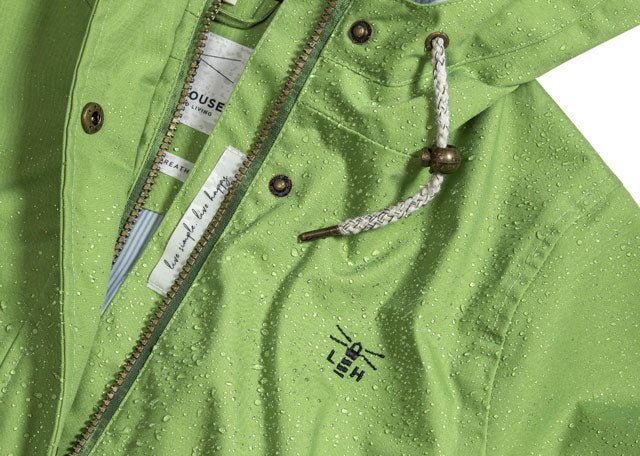A good raincoat is a wardrobe staple. Choosing the right one, however, can be a minefield. Raincoats come with a range of bells and whistles, and in all colours of the rainbow. They come with high-end brand names attached - with the price tag to match - but are also available for little more than the cost of lunch and a coffee. What is the difference? How much do you need to pay in order to get the coat you want? You need to be able to decode the technical language used to describe your coat in order to choose one that is suitable for purpose but at the right price point for you. Here is a simple guide to help you find your perfect raincoat.
There are a number of considerations that are worth bearing in mind if you want to choose a raincoat which is suitable for the purpose you have in mind. There is no point in choosing a coat for off-road cycling that, when wet, weighs more than your bike. Or a coat for the school run which leaves you standing in the playground in mid-December soaked to the skin with teeth chattering louder than a school bell.
Therefore, right at the top of the list, your first consideration must be performance, or in other words, what conditions are you expecting your raincoat to cope with? Once you have decided what you intend to use the coat for, you will be more likely to spend your hard-earned cash on your perfect go-to jacket, one that is worn time and time again, rather than being consigned to a forgotten peg to gather dust.
- Material
Paying attention to which materials have been used to construct your coat should be a high priority as they will dictate the coat’s performance. Is the coat water-resistant? Or is it waterproof?
The degree to which material can resist water ingress is measured by hydrostatic head.
To be 100% waterproof, the British Standard of 3 PSI has to be met, which can withstand 1500mm of pressure. All Lighthouse designs are 3000mm or higher so completely waterproof. During the manufacture process material is coated with a thin layer of waterproof coating such as Teflon or Goretex. Good quality garments will also have taped seams to ensure that water cannot enter the coat’s design at any point.
Lighthouse coats and jackets are designed to be technically strong and beautifully designed. They will keep you covered for city breaks, leisurely country walks and seaside strolls and whilst they are functional and practical for any sudden downpour, they are not suitable for hiking, camping or other strenuous activities.
Our parent company, Target Dry, sell a wide range of products that are suitable for any outdoor pursuit including Xtreme Series high performing outdoor gear and packable waterproofs from Mac in a Sac.
- Warmth
The number of layers used to make up your coat will have an impact on how warm it is. If you want to be dry during summer showers while still remaining cool choose a lightweight breathable material with lightweight breathable lining. If you are fed up shivering in the playground in November and need a waterproof coat that will also keep you cosy during the winter school run, go for a design with a quilted or padded lining for extra warmth.
- Design Details
Designers include extra elements in coats and jackets in order to make them even more functional and suitable for purpose. Make sure the hood fits well and has toggles to keep it in place since a raincoat without a comfortable hood will not prove to be a good investment. Other elements which will be important in your day-to-day use of the coat could include:
Number and placement of pockets - is there space for your wallet and phone or a pair of winter gloves?
Wrist closures and waist drawstrings - these can help ensure your coat fits and flatters your body shape.
Coat length - If you want a lightweight summer jacket for light showers a hip length coat should be sufficient. If you want to remain dry during a heavy winter downpour you might benefit from a longer 3/4 or full length style.
Fit - If you intend to wear your coat during autumn and winter you might also need to check that you can comfortably fit several layers, including a sweater, under your coat. You also need to check that the sleeves are long enough to cover your wrists without riding up your arm when you move around.
Once you have considered all these elements you will have a coat that feels comfortable, looks great and will work for your lifestyle. Pull on your perfect raincoat and you will be able to throw caution to the wind (or should that be rain?) even when the dark clouds threaten and those first drops of rain start to fall.



